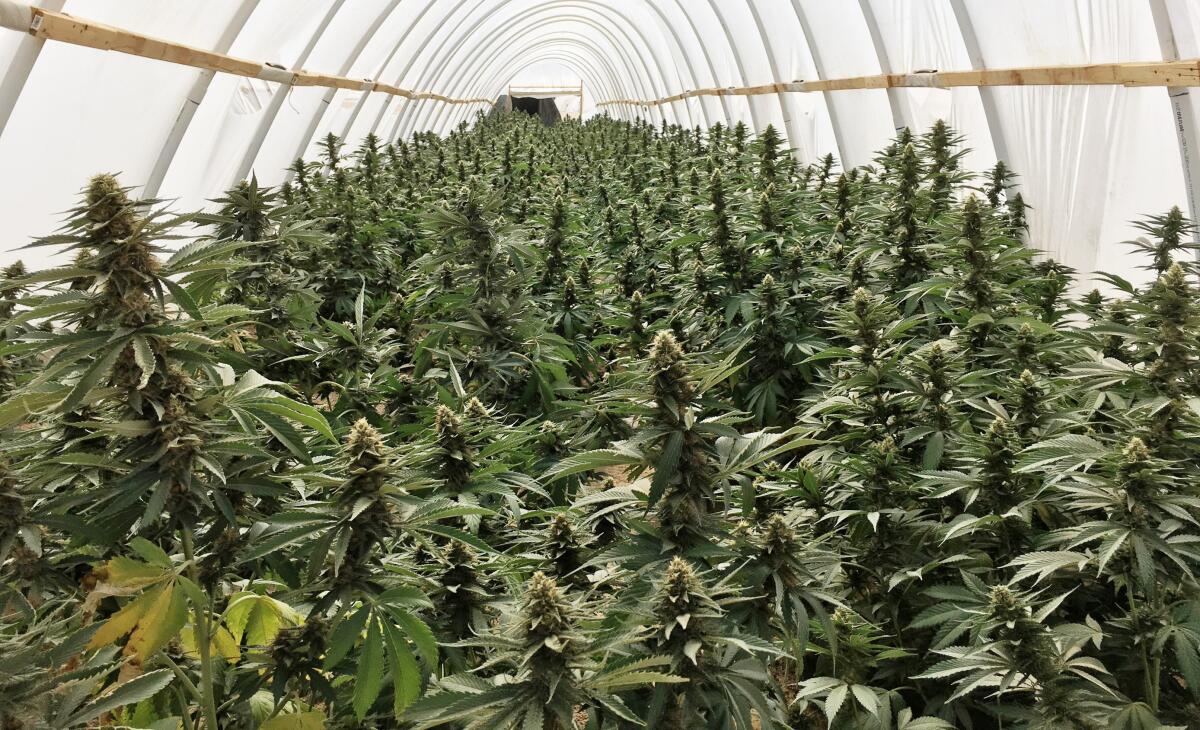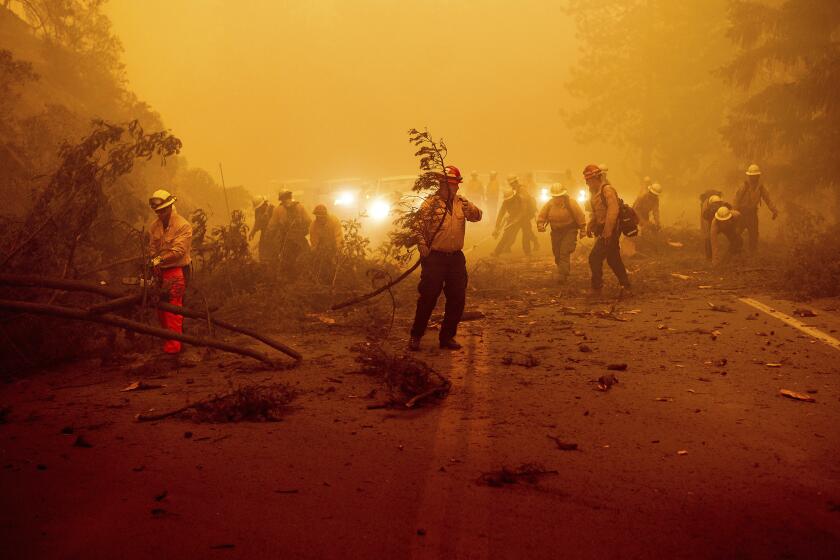Op-Ed: Why legal weed is losing the war to illegal weed

The market for legal weed is growing. But in California, as elsewhere, it faces serious challenges.
We’re not talking about droughts, climate change or supply chain shortages. The biggest challenge is competition from illegal weed. Our best estimate is that roughly three-quarters of the weed currently sold to consumers in California is illegal (meaning it is not licensed by the state), and only one-quarter is legal.
When California voters passed Proposition 64 in 2016 to legalize recreational or “adult-use” cannabis, they also approved a complex state-run system for licensing, regulating and taxing it. This new system, which took effect in 2018 and replaced the formerly (almost) unregulated medical cannabis market, made legal weed much more expensive than illegal weed.
Here’s how it works.
Under Proposition 64, legal-weed businesses must first obtain approval from local authorities, which is impossible in many parts of California. The lucky ones that do get local approval must then apply and pay for a state license. This two-step process can take years and consume hundreds of thousands or even millions of dollars in legal, consulting and license fees.
Legal-weed businesses must also register with the state every gram of weed that’s grown, sold or transferred between locations through a complicated “track-and-trace” system. Managing this process alone can cost tens of thousands of dollars per month in software and labor costs. Of course, none of these costs are faced by illegal-weed producers or sellers.
Legal weed must be tested by a state-licensed independent testing lab for potency and certified as being free from more than 100 different microbial “contaminants,” including more than 60 pesticides.
The list of rules goes on and on. For example, legal weed can’t be sold after 10 p.m. Perhaps this curfew was intended to ensure public safety, but when the only weed available late at night (prime time for weed sales!) is illegal, that’s just a punishment for businesses that want to be legal — and it’s hard to imagine how having more illegal-drug dealers around late at night would make our streets safer.
Next come the taxes. In California, this begins with a state “cultivation tax” paid by the grower, which in 2022 increased to about $161 per pound. The state “excise tax,” paid on top of the cultivation tax, is now 15% of the projected retail price. Then there are additional taxes of up to 15% imposed at each stage from farm through retail by local municipalities. And there’s California’s standard 8% to 9% sales tax. All these taxes are paid by legal-weed businesses and passed along to legal-weed buyers. None of them is paid by illegal-weed businesses. (Gov. Gavin Newsom is now proposing to eliminate the cultivation tax as a part of a cannabis tax simplification package.)
Add up all these licensing costs, taxes and regulatory burdens, and we estimate that California consumers often end up paying about twice as much for a package of legal weed as for a comparable package of illegal weed.
But not even the most experienced weed connoisseurs can tell, just from sampling the product, whether it came from a licensed or unlicensed seller. The only difference is in the packaging, labeling and testing certification, which are evidently not important to most consumers.
Most won’t pay twice as much just to know that its producer paid their taxes and followed the rules.
The framers of Proposition 64 had noble ideals. They wanted to assure buyers that legal weed was perfectly safe to buy and use. They wanted to accommodate diverse interests from law enforcement associations, labor unions and environmental watchdogs. They wanted plenty of taxes and fees to fund good causes like drug education programs, addiction treatment and research initiatives.
It’s nice to imagine a world where all weed businesses are registered, meticulously follow safety and environmental standards, and sell perfectly clean and pure products that generate lots of tax dollars for the state. But trying to achieve those laudable goals perfectly is standing in the way of practical success for legal weed.
Regulations and taxes are not free. Far from it. In California, many of the operations that made a good-faith effort to go legal and follow the rules have gone out of business from underestimating their costs or overestimating the size of the legal-weed market. A legal system works well when people and businesses are rewarded, not punished, for following the rules.
Furthermore, a system that makes legal weed too costly ironically undermines the very public-interest objectives that the system was designed to achieve. If 75% of the weed consumed in California is produced illegally — thus totally ignoring safety testing, environmental standards, pesticide use, water rights, etc. — then the positive impact of those standards is severely diminished.
Does that mean the best way forward is ramped-up enforcement against illegal weed? We don’t think so. Beyond the logistical impossibility of winning a massive multiplayer game of whack-a-mole, the idea of prosecuting more people for weed offenses was not what we think most California voters had in mind when they voted to legalize.
The best way forward is for policymakers to take a practical view about the real-world effects of regulations and taxes. Some careful cost-benefit analysis could yield a set of pared-down regulations that maintain the most effective health and safety rules while loosening up on some unnecessary restrictions that are strangling the young industry before it is up and running.
For instance, track-and-trace requirements could be relaxed, local taxes could be capped at 3% (as Massachusetts has done), the 10 p.m. curfew on legal weed could be lifted, and tolerance levels for microbial substances could be re-evaluated based on actual harms observed in peer-reviewed scientific literature.
Realism means acknowledging that taxed and regulated legal weed may always be a bit more expensive than illegal weed, and that illegal weed may never completely disappear. But in the long run, easing some of the many pressures on folks who are trying their best to follow the rules could help legal weed win.
Robin Goldstein and Daniel Sumner are economists at UC Davis and authors of the forthcoming book “Can Legal Weed Win?: The Blunt Realities of Cannabis Economics.”
More to Read
A cure for the common opinion
Get thought-provoking perspectives with our weekly newsletter.
You may occasionally receive promotional content from the Los Angeles Times.










